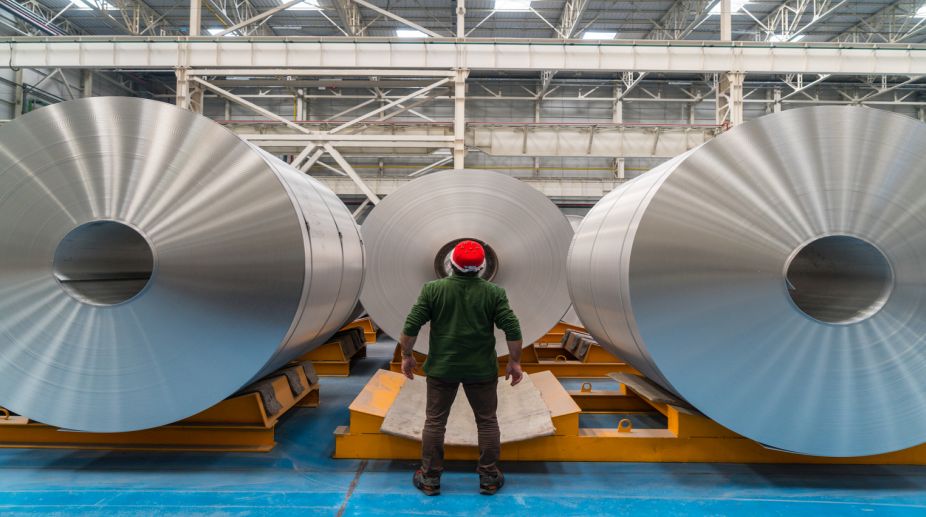The outlook for steel sector is likely to remain negative in next fiscal due to continued operational and financial challenges and lower demand from the realty sector, says a report.
“The regulatory support and increased government spending remain crucial for maintaining the profitability of steel producers in fiscal 2018.
Advertisement
“But the muted demand growth of 4-5 per cent and overcapacity leading to low capacity utilisation which limits companies' ability to fully pass on volatility in input prices, are likely to keep cash flows and profitability under pressure,” India Ratings said in a report.
The demand growth will remain muted at 4-5 per cent in FY18, and is likely to be driven by demand growth from key end-user industries such as construction, capital goods and consumer durables. An increased government spending due to budget push on infrastructure and housing may support demand.
The increase in demand for consumer durables is likely to be supported by the expected growth in consumption following better monsoons, increase in salaries after the seventh pay commission award, and lower interest rate.
However, the note-ban impact is likely to constrain the realty sector which will have a debilitating result on the steel demand, says the report.
The capacity utilisation is also expected to remain low at around 75 per cent in FY18.
The capacity of around 6-6.5 mt is likely to be added in FY18 following the addition of around 9-10 mt in FY17.
However, production is expected to grow only by 8-10 mt per year in FY17 and FY18.
The low capacity utilisation is likely to limit the ability of producers to pass on the input cost increases and profit margin during FY18.
The input prices were volatile in FY17 with coking coal prices soaring 310 per cent since January 2016 to $308/tonne by November 2016 and then correcting to around $180/tonne by January 2017.
Softened input prices, which in turn would lead to international steel prices remaining below the limits imposed by anti-dumping duty, would be crucial to shield the domestic players from international competition.
The report notes that the global oversupply continues and international prices are likely to remain soft, except as a response to increase in input costs.
The industry also needs government support.
The profitability of industry got a respite in FY17 after the imposition of minimum import price in February 2016.
However, significant increase in inputs costs since then has again increased prices very close to the levels envisaged under the anti-dumping duty and any further increase is likely to make the protection infructuous.











